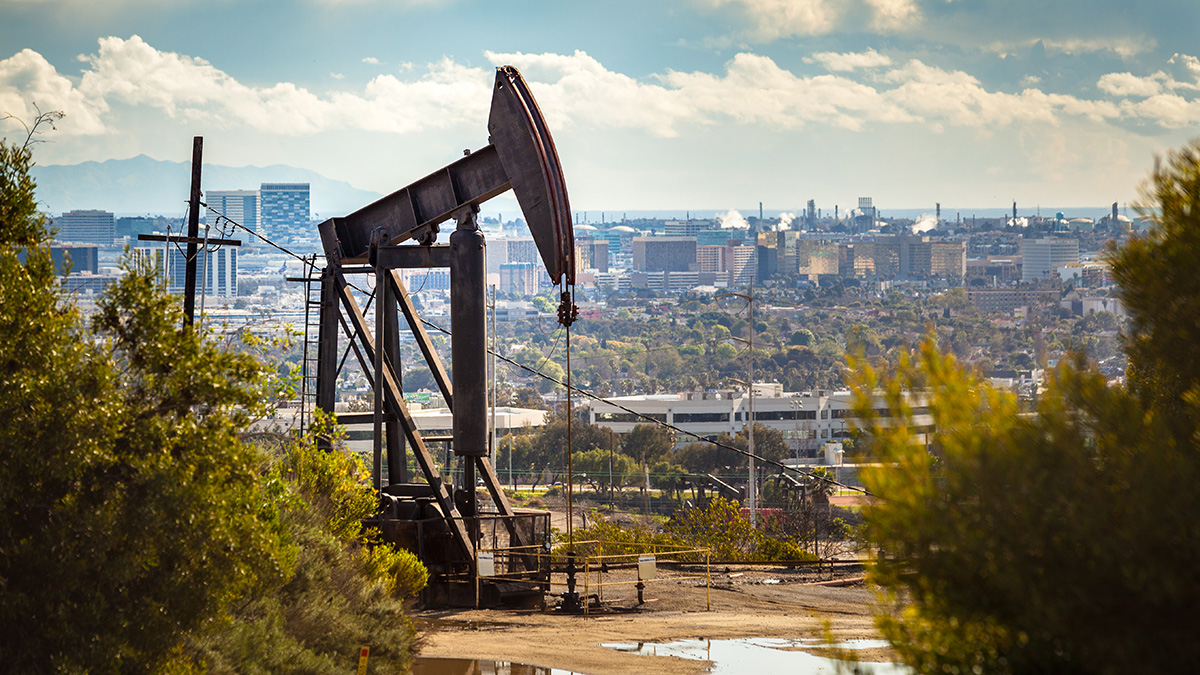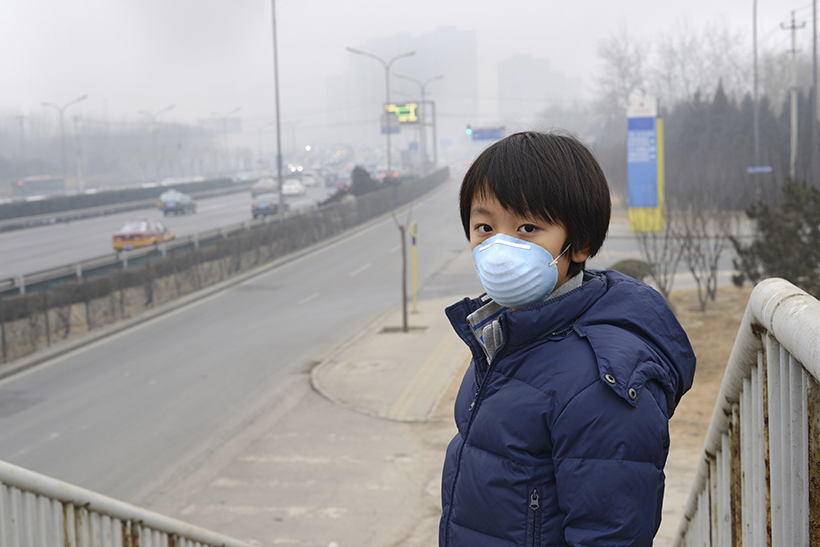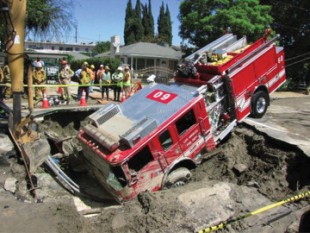Damage zones extend to either side of many faults and can affect how future earthquakes behave.
Los Angeles
Another significant landslide in the Hollywood Hills
The Landslide Blog is written by Dave Petley, who is widely recognized as a world leader in the study and management of landslides. California continues to suffer repeated bouts of heavy rainfall, probably associated with the El Nino conditions that have been in place through the winter. On 24 March 2024, the rainfall triggered another […]
The “Black Gold” Flowing Under Los Angeles
Functioning oil fields, some with cleverly camouflaged infrastructure, are tucked into the urban sprawl of the Los Angeles basin. But recent legislation could change that.
Earthquakes Ripple Through 3D Printed Models of Los Angeles
Using stainless steel models, researchers find that high-frequency seismic waves—the most damaging to buildings—are attenuated in the Los Angeles sedimentary basin.
Exposing Los Angeles’s Shaky Geologic Underbelly
Current calculations might underestimate the susceptibility of Los Angeles to earthquake shaking, so researchers and volunteers are deploying seismic networks near the city to remedy a data shortage.
One Fifth of Los Angeles’s CO2 Rises from Lawns and Golf Courses
Measurements of carbon-14 show that roughly 20% of carbon dioxide emissions in the Los Angeles Basin are likely due to the decay of plants in managed landscapes.
Switching to Drought-Tolerant Plants Could Alter Urban Climates
In Los Angeles, replacing lawns with native plants that need less water could lead to hotter days and cooler nights.
Los Angeles Gets Serious About Preparing for the “Big One”
A large earthquake in southern California could devastate Los Angeles. To help reduce the city’s risks, one scientist spent last year working in the LA mayor’s office.
Urbanization and Air Pollution: Then and Now
Analysis of decades of mitigation efforts in Los Angeles demonstrates that air quality in megacities can be greatly improved.
Epidemiology Can Help Predict Urban Water System Failures
How are broken water pipes like fatalities in a heat wave? Researchers look to an epidemiological model to better care for infrastructure.










